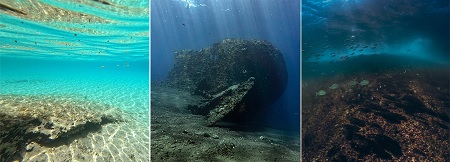
Register with Plumtri!
Register on plumtri as an Individual or as an Organisation to gain access to all of its useful features and remain updated on the latest R&I news, events and funding opportunities.
-
 Welcome to plumtriA platform for Research & Innovation
Welcome to plumtriA platform for Research & Innovation -
 Looking for Funding?Check out the current open calls
Looking for Funding?Check out the current open calls -
 Register today to start receiving our monthly newsletter
Register today to start receiving our monthly newsletter -
 Looking to partner up?Search our list of registered profiles
Looking to partner up?Search our list of registered profiles -
 You have questions on a particular funding programme?
You have questions on a particular funding programme?
Project BathMalta - Mapping the seafloor of the Maltese archipelago

A project awarded by the MCST (Malta Council of Science and Technology) through the Space Research fund call 2022 and sponsored by the ESA (European Space Agency) will allow researchers to develop methodologies to map the seafloor of the Maltese archipelago.
The 2 year project called BathMalta will entail the use of satellite systems, in particular SENTINEL2 and SENTINEL3 from the European space program Copernicus, to retrieve detailed images of the seafloor in the nearshore and coastal areas of Malta, with an average maximum depth of 25 to 30 m.
Satellite Derived Bathymetry (SDB) has been supporting hydrographic surveys for the last 30 years, but it is only in the last decade that there has been the most rigorous scientific development. Satellite derived bathymetry is cost effective because it avoids the use of large vessels in shallow areas where surveys are unpractical. The methodology put in place by the research team will exploit the penetration depth of light in the water column to reconstruct the depth of the seafloor (bathymetry) and its morphology.
This type of work will benefit from machine learning techniques and from the collaboration with European earth observation specialists from research and industry. The project will be led by Prof Aaron Micallef, from the Marine Geology and Seafloor Surveying research group and Dr Adam Gauci, from the Oceanography Malta research group, both from the Department of Geosciences, within the Faculty of Science.
Local companies and agencies will benefit from the outcome of this research since it will support work and commercial operations in the areas of Malta that are characterised by shallow depth (e.g. Valletta Harbour).
